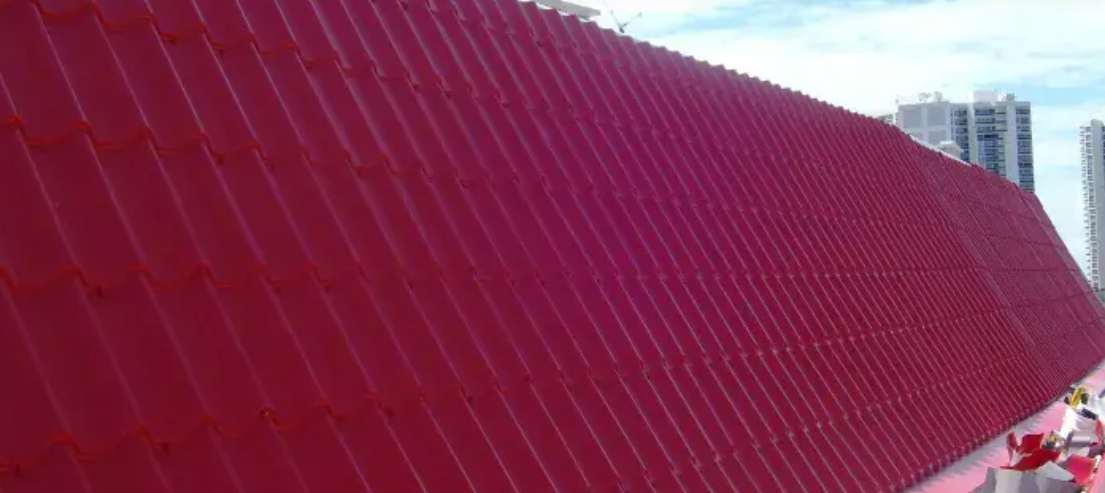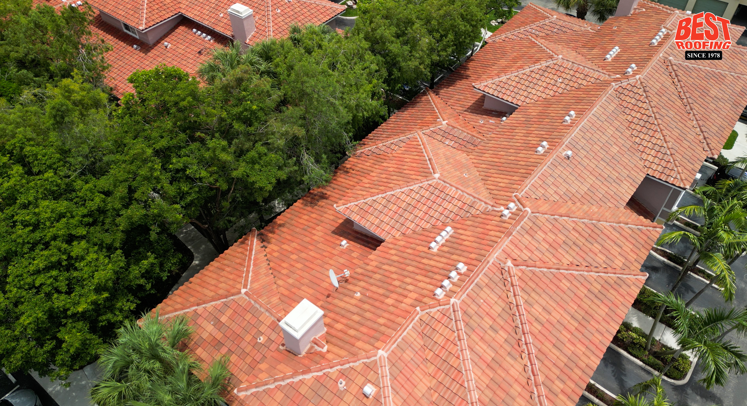If you manage a commercial property in Florida, your flat roof faces unique challenges: heat, humidity, hurricanes, and heavy rainfall. Choosing the right system can save you money, extend your roof’s life, and protect your tenants and operations.
TPO commercial roofing (thermoplastic polyolefin) has quickly become the go-to solution for flat and low-slope roofs in Florida. Below, we’ll answer the most common questions property managers and building owners have about TPO so you can decide if it’s the right investment for your building.
What is TPO roofing?
A TPO Roofing system (thermoplastic polyolefin) is a single-ply roofing membrane designed for flat and low-slope roofs. It was introduced in the 1990s and has grown popular thanks to its durability, energy efficiency, and lower cost compared to alternatives like PVC.
Key features of TPO:
- Flexible membrane that expands and contracts with temperature changes
- White, reflective surface that reduces heat absorption
- Resistant to UV rays, chemicals, and fungi
- Lightweight and recyclable
Why is TPO a smart choice for Florida properties?

Florida’s climate is tough on commercial roofs, but TPO addresses the most pressing issues:
- Heat resistance – The reflective surface helps reduce cooling costs by lowering rooftop temperatures.
- Storm durability – Properly installed TPO can withstand high wind uplift, critical during hurricane season.
- Moisture protection – Welded seams create a watertight barrier against Florida’s frequent rain.
- Environmental benefits – TPO is free of plasticizers and chlorine, making it more sustainable.
- Cost efficiency – Balances upfront affordability with long-term performance.
How does TPO compare to other flat roofing systems?
|
Roofing System |
Strengths |
Weaknesses |
Best Fit |
|
TPO |
Reflective, cost-effective, durable |
Newer technology than others |
Florida heat + budget balance |
|
PVC |
Chemical-resistant, long-lasting |
Higher cost, uses plasticizers |
Restaurants, chemical-heavy facilities |
|
EPDM (rubber) |
Durable, long track record |
Absorbs heat, less efficient in hot climates |
Cooler or northern regions |
|
Built-Up (BUR) |
Strong, multi-layer protection |
Heavy, labor-intensive |
Industrial facilities with load capacity |
In Florida, TPO typically beats EPDM on energy efficiency and beats PVC on cost.
How is a TPO roof installed?

TPO can be installed in several ways, depending on your building and budget:
- Mechanically attached – Fastened with plates and screws, then seams are heat-welded. Cost-effective and common in Florida.
- Induction welded (point-affixed) – Uses electromagnetic induction for superior wind uplift resistance. Ideal for hurricane zones.
- Fully adhered – Membrane is glued to insulation for an even, aesthetic finish. Often chosen for high-visibility buildings.
Your contractor will recommend the best method for TPO installation after inspecting your roof structure and risk factors.
How long does a TPO roof last in Florida?
With proper installation and maintenance, a TPO roof can last 20–25 years. Longevity depends on:
- Roof design and drainage
- Quality of installation
- Frequency of inspections and maintenance
Skipping maintenance can shorten its lifespan significantly.
What maintenance does a TPO roof require?
A commercial roof maintenance plan is essential to get the most from your TPO system. Typical tasks include:
- Inspections twice a year (spring and fall, plus after major storms)
- Clearing drains and gutters to prevent ponding water
- Seam and flashing checks to ensure welds remain watertight
- Prompt repairs for punctures, tears, or storm damage
A proactive plan not only extends the life of your roof but also keeps your warranty valid.
Is TPO roofing energy efficient?
Yes. TPO membranes are often white or light-colored, making them highly reflective. This reduces rooftop heat absorption and lowers cooling costs — a major benefit in Florida, where HVAC systems already work overtime.
Some buildings see a measurable reduction in cooling costs within the first year of installation.
How much does TPO roofing cost?
On average, TPO commercial roofing costs between $7–$13 per square foot in Florida, depending on:
- Roof size and complexity
- Insulation type and thickness
- Installation method (mechanically attached, induction welded, or adhered)
- Existing roof condition (removal or recovery)
While upfront costs may vary, TPO often proves the most cost-effective option when factoring in energy savings and lifespan. Check with Best Roofing to hear about their TPO financing options.
What are the biggest advantages of TPO roofing for property managers?
- Lower energy bills in Florida’s hot climate
- Hurricane-ready installation methods with strong wind uplift resistance
- Fewer leaks thanks to heat-welded seams
- Budget-friendly installation compared to PVC
- Sustainable choice with recyclable material
Is TPO roofing right for my property?
TPO is an excellent fit for:
- Warehouses and logistics centers
- Retail centers and malls
- Office complexes
- Hospitals and schools
- Multi-family and condo buildings
If your building has a flat or low-slope roof and you’re looking for a balance of performance, affordability, and energy savings, TPO is worth serious consideration.
Work with Florida’s TPO Roofing Experts
At Best Roofing, we’ve been helping Florida property managers and building owners protect their assets for more than 47 years. Our team specializes in TPO commercial roofing installation, recovery, repair, and maintenance programs tailored to Florida’s climate and building codes.
Want to know if TPO is the right system for your roof? Schedule a roof inspection today and get expert guidance from Florida’s commercial roofing leaders.



